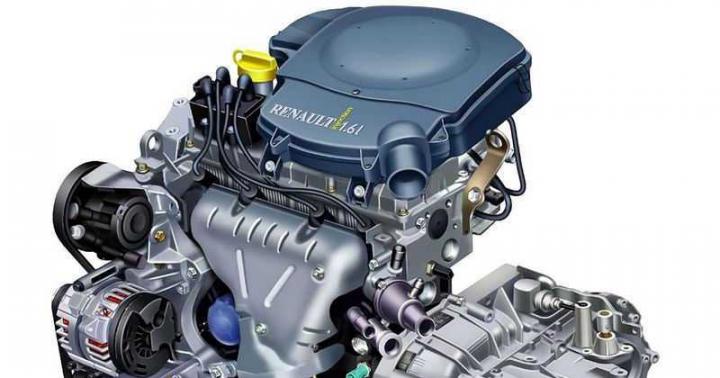M. SIRAZETDINOV, Ufa
Radio, 2000, No. 9
When assembling powerful ULFs, the question always arises about protection against impulse overloads at the moment of switching on. As a rule, the output stage of any powerful amplifier is powered from a bipolar source in which very large capacitors are installed (up to 10,000 μF and sometimes even higher). When the power supply is turned on, a very large charging current begins to flow through them, which creates a significant load on the power source itself, and this is also not very good for the output stage...
The way out is the so-called “soft” start: smooth supply of mains voltage to the mains transformer. Quite a lot of devices have been considered in the literature and another of them is presented here.
Its main distinctive feature is that here the increase in mains voltage occurs really smoothly, and not stepwise as in many similar devices.
Device diagram for soft switching on ULF
Fundamental circuit diagram of the UMZCH “soft” power-on device shown in the figure. Transistor VT1 through the diode bridge VD1-VD4 is connected in series with the primary winding of transformer T1 of the power supply. The choice of a MOSFET with an insulated gate is due to the high input impedance of its control circuit, which reduces power consumption.
The control unit consists of circuits that generate voltage at the gate of transistor VT1, and an electronic switch on transistors VT2, VT3. The first circuit is formed by elements VD5, C1, R1 - R3, VD7, C4, which set the initial voltage at the gate of transistor VT1. The second includes elements VD8, R4, R5, C2, SZ, which ensure a smooth increase in voltage at the gate of transistor VT1. Zener diode VD6 limits the voltage at the gate of transistor VT1 and protects it from breakdown.
In the initial state, the capacitors of the control unit circuits are discharged, therefore, at the moment the contacts of the mains power switch SB1 are closed, the voltage at the gate of transistor VT1 relative to its source is zero and there is no current in the source-drain circuit. This means that the current in the primary winding of transformer T1 and the voltage drop across it are also zero. With the arrival of the first positive half-cycle of the mains voltage, capacitor C1 begins to charge through the circuit VD5, VD3 and during this half-cycle it is charged to the amplitude value of the mains voltage.
Zener diode VD7 stabilizes the voltage on the divider R2R3. The voltage on the lower arm of trimming resistor R3 in the circuit determines the initial gate-source voltage of transistor VT1, which is set close to the threshold value of 2...4 V. After several periods of mains voltage, current pulses flowing through capacitor C2 will charge it to voltage exceeding the cutoff voltage of transistor VT3.
The electronic switch on transistors VT2, VT3 closes, and the capacitor SZ begins to charge through the circuit VD8, R4, R5, R3, VD3. The gate-source voltage of transistor VT1 is determined at this time by the sum of the voltage on the lower arm of resistor R3 and the gradually increasing voltage on capacitor SZ. As this voltage increases, transistor VT1 opens and the resistance of its source-drain channel becomes minimal. Accordingly, the voltage on the primary winding of transformer T1 smoothly increases almost to the value of the mains voltage. A further increase in the gate-source voltage of transistor VT1 is limited by the zener diode VD6. In steady state, the voltage drop across the diodes of the bridge VD1-VD4 and transistor VT1 does not exceed 2...3 W, so this practically does not affect the further operation of the UMZCH power supply. The duration of the most severe operating mode of transistor VT1 does not exceed 2...4 s, so the power dissipated by it is small. Capacitor C4 eliminates voltage ripple at the gate-source junction of transistor VT1. created by pulses of the charging current of the capacitor SZ on the lower arm of resistor R3.
An electronic switch on transistors VT2, VT3 quickly discharges the capacitor SZ after turning off the UMZCH power supply or during short-term interruptions in the power supply and prepares the control unit for restart.
The author's version of the protection device uses an imported capacitor manufactured by Gloria (C1), as well as domestic ones: K53-1 (C2, C4) and K52-1 (SZ). All fixed resistors are MLT, trimming resistor R3 is SP5-3. Transistor KP707V (VT1) can be replaced with another, for example. KP809D. It is important that the resistance of its channel in the open state is minimal, and the maximum source-drain voltage is at least 350 V. Instead of the KT3102B (VT2) transistor, it is permissible to use KT3102V and KT3102D, and instead of KP103I (VTЗ) - KP103Zh.
Transistor VT1 is equipped with a small heat sink with an area of 10...50 cm 2.
Setting up the device consists of selecting the optimal position of the trimmer resistor R3. Initially, it is installed in the lower (according to the diagram) position and connected through a high-resistance divider to the primary winding of the transformer
T1 oscilloscope. Then the contacts of switch SB1 are closed and, by moving the slider of resistor R3. observe the process of increasing voltage amplitude on the primary winding of the transformer. The engine is left in a position in which the time interval between turning on SB1 and the beginning of the increase in the voltage amplitude on the T1 winding is minimal. If necessary, you should select the capacitance of the capacitor SZ.
The device was tested with a prototype UMZCH, similar in structure to the amplifier described in the article by A. Orlov “UMZCH with single-stage voltage amplification” (see “Radio”. 1997, No. 12, pp. 14 - 16). The voltage surge at the output of the UMZCH when the power supply was turned on did not exceed 1.5 V
Smooth power-on circuit (soft start or step-by-step) for a low-frequency power amplifier or other device. This simple device can improve the reliability of your radio equipment and reduce network interference when turned on.
Schematic diagram
Any power supply for radio equipment contains rectifying diodes and high-capacity capacitors. At the initial moment of turning on the mains power, a pulse current jump occurs while the filter capacitors are being charged.
The amplitude of the current pulse depends on the capacitance value and voltage at the rectifier output. So, at a voltage of 45 V and a capacitance of 10,000 μF, the charging current of such a capacitor can be 12 A. In this case, the transformer and rectifier diodes operate briefly in short-circuit mode.
To eliminate the danger of failure of these elements by reducing the inrush current at the time of initial switching on, the circuit shown in Figure 1 is used. It also allows you to lighten the modes of other elements in the amplifier during transient processes.
Rice. 1. Schematic diagram of smooth switching on of a power source using a relay.
At the initial moment, when power is applied, capacitors C2 and C3 will be charged through resistors R2 and R3 - they limit the current to a value that is safe for the rectifier parts.
After 1...2 seconds, after capacitor C1 is charged and the voltage on relay K1 increases to a value at which it will operate and, with its contacts K1.1 and K1.2, will bypass limiting resistors R2, R3.
The device can use any relay with an operating voltage lower than that at the output of the rectifier, and resistor R1 is selected so that the “extra” voltage drops across it. The relay contacts must be designed for the maximum current operating in the amplifier's power supply circuits.
The circuit uses a relay RES47 RF4.500.407-00 (RF4.500.407-07 or others) with a rated operating voltage of 27 V (winding resistance 650 Ohms; current switched by contacts can be up to 3 A). In fact, the relay operates already at 16...17 V, and resistor R1 is selected as 1 kOhm, and the voltage across the relay will be 19...20 V.
Capacitor C1 type K50-29-25V or K50-35-25V. Resistors R1 type MLT-2, R2 and R3 type S5-35V-10 (PEV-10) or similar. The values of resistors R2, R3 depend on the load current, and their resistance can be significantly reduced.
Improved device circuit
The second diagram shown in Fig. 2, performs the same task, but makes it possible to reduce the size of the device by using a timing capacitor C1 of smaller capacity.
Transistor VT1 turns on relay K1 with a delay after capacitor C1 (type K53-1A) is charged. The circuit also allows, instead of switching secondary circuits, to provide a stepwise voltage supply to the primary winding. In this case, you can use a relay with only one group of contacts.

Rice. 2. Improved circuit diagram of smooth switching on of the UMZCH power supply.
The value of resistance R1 (PEV-25) depends on the load power and is selected such that the voltage in the secondary winding of the transformer is 70 percent of the rated value when the resistor is turned on (47...300 Ohms). Setting up the circuit consists of setting the delay time for turning on the relay by selecting the value of resistor R2, as well as selecting R1.
In conclusion
The given circuits can be used in the manufacture of a new amplifier or in the modernization of existing ones, including industrial ones.
Compared to similar devices for two-stage supply voltage given in various magazines, those described here are the simplest.
Original source: unknown.
When the power supplies of amplifiers, laboratory and other power supplies are turned on, interference occurs in the network caused by the inrush currents of transformers, charging currents of electrolytic capacitors and the start of the powered devices themselves. Externally, this interference manifests itself as “blinking” lights, clicks and sparks in network sockets, and electrically it is a sag in the network voltage, which can lead to failure and unstable operation of other devices that are powered from the same network. In addition, these starting currents cause burnt contacts of switches and network sockets. Another negative effect of the starting current is that rectifier diodes with such a start operate under current overload and can fail. For example, the surge current charging a 10,000 µF 50V capacitor can reach 10 amperes or more. If the diode bridge is not designed for such current, such operating conditions can damage the bridge. The inrush currents are especially noticeable at a power of more than 50-100W. For such power supplies we offer a soft starter.
When connected to the network, the power supply starts through the current-limiting resistor R4. After some time required for its start, charging the capacitors and starting the load, the resistor is bypassed by the relay contacts and the power supply is brought to full power. The switching time is determined by the capacitance of capacitor C2. Elements C1D1C2D2 are a transformerless power supply for the relay control circuit. Zener diode D2 plays a purely protective role, and may be absent if the control circuit is working properly. The BS-115C-12V relay used in the circuit can be replaced with any other relay with a contact current of at least 10A, with the selection of zener diodes, capacitor C1 and the selection of transistor VT1 for a voltage greater than the relay operating voltage. Zener diode D3 provides hysteresis between the voltage of the relay on and off. In other words, the relay will turn on abruptly rather than smoothly.
Capacitor C1 determines the relay switching current. In case of insufficient current, the capacitor capacity must be increased (0.47...1 µF 400...630V). For protective purposes, it is advisable to wrap the capacitor with electrical tape or put a heat-shrink tube on it. Fuses are selected for twice the rated current of the power supply. For example, for a 100W power supply, the fuses must be rated at 2*(220/100)=5A. If necessary, the circuit can be supplemented with a mains symmetrical/unbalanced filter connected after the fuses. The connection to the housing, present in the diagram, can only be regarded as a common wire for connecting the tester. Under no circumstances should it be connected to the device chassis, connected to the common wires of network filters, etc.
This circuit limits the current through the power wires to 5A for about 1.5 seconds. After this, the time relay will close and the current consumption will no longer be limited. This is a very useful device, because if you have a large transformer or electrolytic capacitors of significant capacity, then at the moment of switching on they will act as a short circuit for a short period of time.

The power delay circuit is implemented by temporarily connecting several power resistors into the circuit, thus minimizing the large inrush current.

The relay is used at 24 volts, with contacts that can withstand 0 amperes and above. The delay time depends on the total capacitance of C2 and C3, as well as their charging rate, determined by capacitor C1, which acts as a ballast resistor. The soft start device will also work perfectly in tandem with electric motors.
|
|
This simple device can improve the reliability of your radio equipment and reduce network interference when turned on.
Any power supply for radio equipment contains rectifying diodes and high-capacity capacitors. At the initial moment of turning on the mains power, a pulse current jump occurs - while the filter capacitors are being charged. The amplitude of the current pulse depends on the capacitance value and voltage at the rectifier output. So, at a voltage of 45 V and a capacitance of 10,000 μF, the charging current of such a capacitor can be 12 A. In this case, the transformer and rectifier diodes operate briefly in short-circuit mode.
To eliminate the danger of failure of these elements by reducing the inrush current at the time of initial switching on, the one shown in Fig. is used. 1.7 diagram. It also allows you to lighten the modes of other elements in the amplifier during transient processes.
Rice. 1.7
At the initial moment, when power is applied, capacitors C2 and SZ will be charged through resistors R2 and R3 - they limit the current to a value that is safe for the rectifier parts.
After 1...2 seconds, after the capacitor C1 is charged and the voltage on the relay K1 increases to a value at which it will operate and bypass the limiting resistors R2, R3 with its contacts K1.1 and K1.2.
The device can use any relay with an operating voltage lower than that at the output of the rectifier, and resistor R1 is selected so that the “extra” voltage drops across it. The relay contacts must be designed for the maximum current operating in the amplifier's power supply circuits. The circuit uses a relay RES47 RF4.500.407-00 (RF4.500.407-07 or others) with a rated operating voltage of 27 V (winding resistance 650 Ohms; current switched by contacts can be up to 3 A). In fact, the relay operates already at 16...17 V, and resistor R1 is selected as 1 kOhm, and the voltage across the relay will be 19...20 V.
Capacitor C1 type K50-29-25V or K50-35-25V. Resistors R1 type MLT-2, R2 and R3 type S5-35V-10 (PEV-10) or similar. The values of resistors R2, R3 depend on the load current, and their resistance can be significantly reduced.

Rice. 1.8
The second diagram shown in Fig. 1.8, performs the same task, but allows you to reduce the size of the device by using a timing capacitor C1 of smaller capacity. Transistor VT1 turns on relay K1 with a delay after capacitor C1 (type K53-1A) is charged. The circuit also allows, instead of switching secondary circuits, to provide a stepwise voltage supply to the primary winding. In this case, you can use a relay with only one group of contacts.
The value of resistance R1 (PEV-25) depends on the load power and is selected such that the voltage in the secondary winding of the transformer is 70 percent of the rated value when the resistor is turned on (47...300 Ohms).
Setting up the circuit consists of setting the delay time for turning on the relay by selecting the value of resistor R2, as well as selecting R1.
The given circuits can be used in the manufacture of a new amplifier or in the modernization of existing ones, including industrial ones.
Compared to similar devices for two-stage supply voltage given in various magazines, those described here are the simplest.
 Essentially, the soldering iron tip is hardened due to a short circuit. The secondary winding contains half a turn, the voltage is about 1 volt, but the current reaches 15 Amperes! It is precisely because of the reduced voltage that the load is not so great, and during operation the parts are almost cold.
Essentially, the soldering iron tip is hardened due to a short circuit. The secondary winding contains half a turn, the voltage is about 1 volt, but the current reaches 15 Amperes! It is precisely because of the reduced voltage that the load is not so great, and during operation the parts are almost cold.

